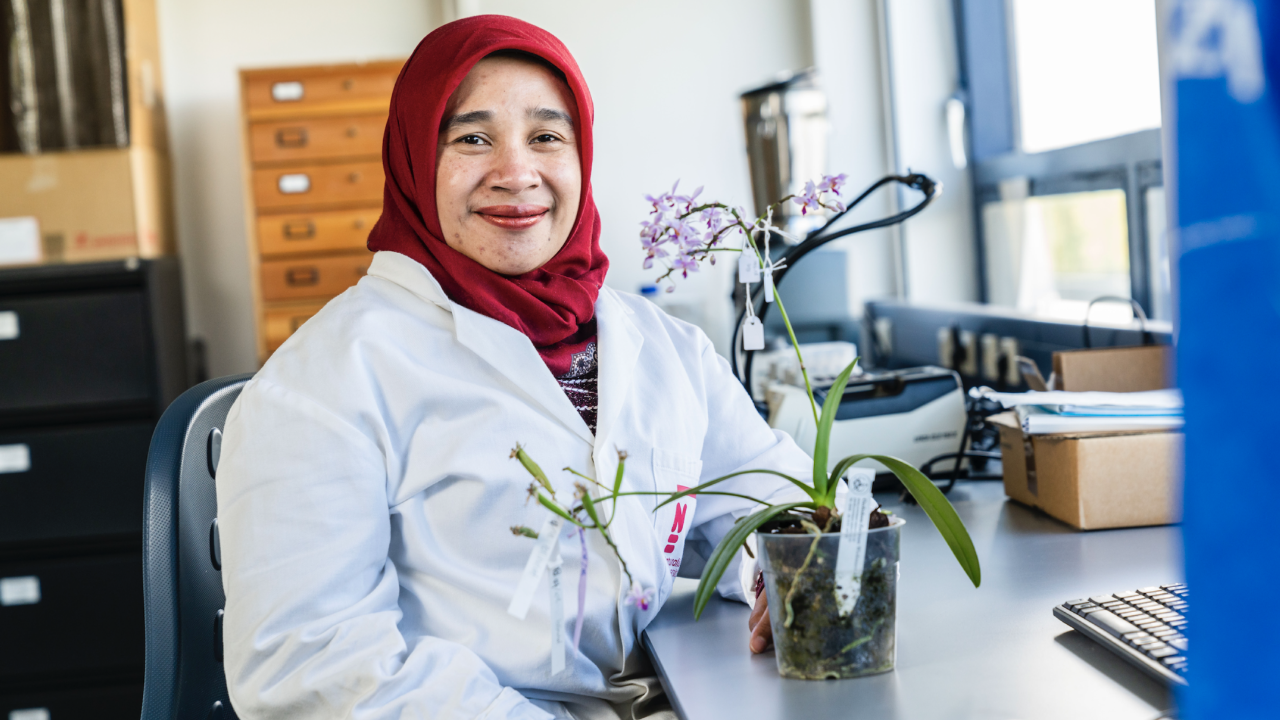
On Wednesday, Sept. 13 at 10 a.m., Dewi Pramanik defended her thesis titled 'Evolution and development of flowers, fruits and inflorescences of Phalaenopsis and other orchid species' in the Academy Building in Leiden. For her PhD research at Naturalis, affiliated with Leiden University, she investigated the development and evolution of several orchid species. The research, started in 2017, is now coming to an end. 'It is unfortunate that this project is coming to an end, but I am excited to finally be able to share it.'
Pompand splendor
Dewi was born in Ciamis in West Java. Her fascination with orchids began early. 'In the backyard of my parents' house, the most beautiful specimens bloomed,' says Dewi. 'Orchids are all pomp and splendor. The flowers cry out for attention and I like to give them that attention.' For a long time, Dewi worked as a researcher growing new commercial orchid varieties. When she decided to research orchid development and evolution, it turned out that little had been done. 'A lot of research already existed on species identification and where those species are geographically located. But why the orchid family is so diverse, and what the biological origins of that diversity are, little was known about that.'
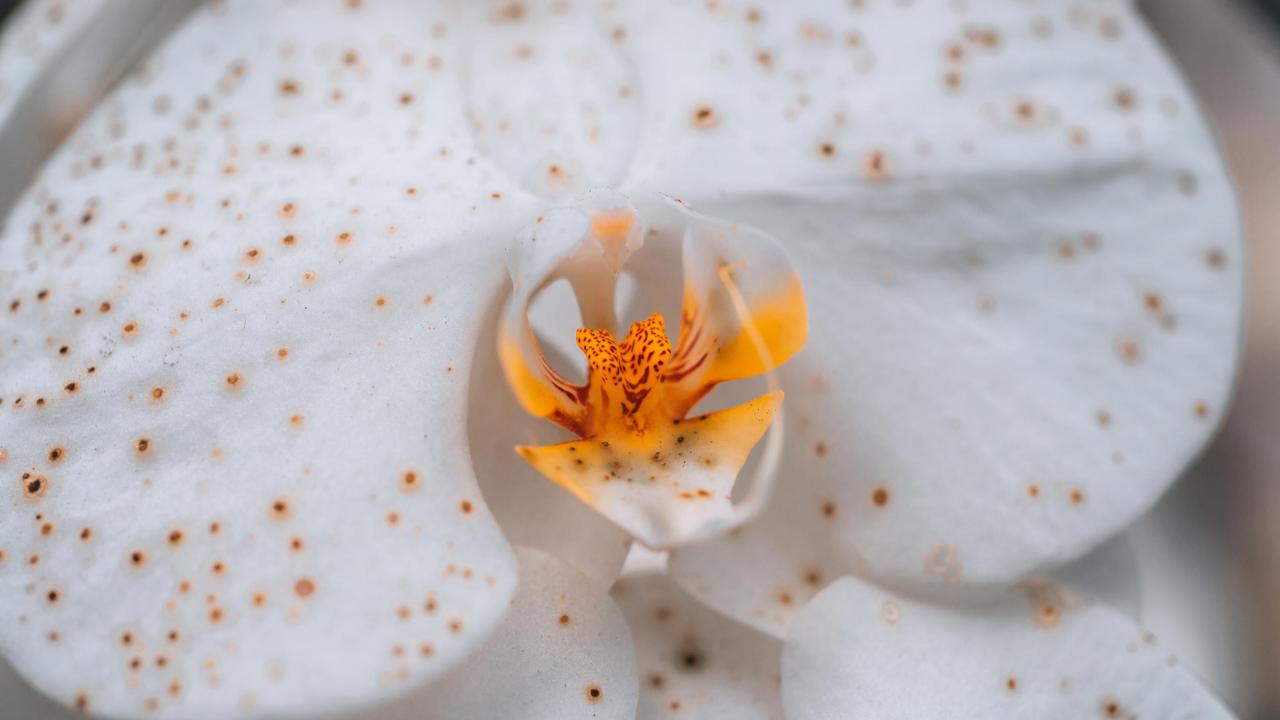
Orchidsin the scanner
The orchid family has an estimated twenty-five to thirty thousand species, and within this plant family there is enormous variation in the shape of the flowers and fruits. This variation results from adaptations to pollinators such as insects. In order for insects to pick up and release pollen as efficiently as possible, the flower has adapted over time. Dewi investigated how the shape and size of the flower are linked to pollinators. She used the Hortus Botanicus Leiden's collection of live orchids and examined them at Naturalis. There she used a micro-CT scanner, among other things. 'The techniques were all new to me, but I was well guided and learned a lot. Making the micro-CT scans was very valuable. Among other things, we could see on them that the callus (a ward-like structure in the middle of the flower that insects use to cling onto) of the Phalaenopsis served as stamens in earlier evolutionary stages.'
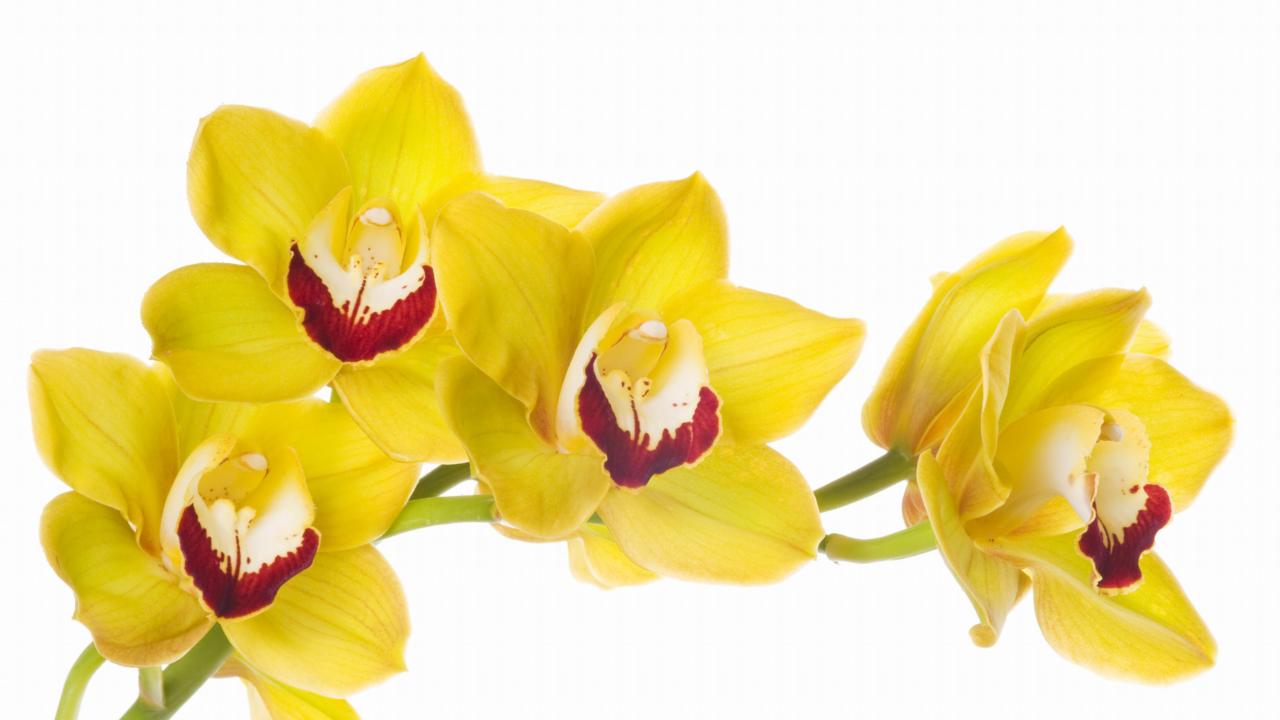
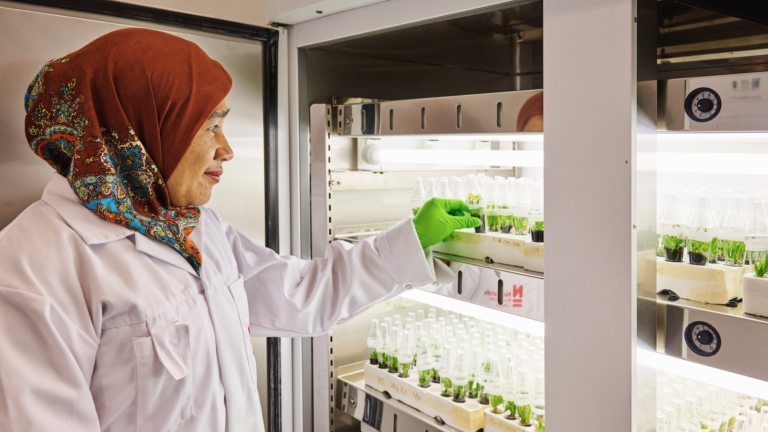
Rootslike spirals
Something funny is going on with the roots of the Erycina pusilla. Not only do they grow above the ground, they spin in circles, like a spiral. When they have turned 180 degrees, this is called resupination, and the roots do this to make the best use of sunlight and water. 'To learn more about root resupination, we made a time-lapse video. Every week we made a 3D CT scan. We did this for 20 weeks. If you put the images back to back, you get a time-lapse video.' It was important to make a 3D image of the roots, says Dewi: 'If you would take a photograph, the image would be flat and then you can't really determine which way the roots turn. And that's exactly what we wanted to know!'
Strong stemswithout sticks
The flowers of orchids grown for consumption are larger than those of wild orchids. As a result, the stem of the orchid cannot hold up the flower and sticks and clips are needed during raising. This is a time-consuming process. 'Some orchid species stand upright. There is lignification in the stem and therefore they have stronger stems.' By crossing these species, you can grow flowers with extra strong stems and no longer need sticks to keep the large flowers upright. 'A cross between the hybrid variety Purple Gem and the Phalaenopsis viridis is best suited for this.'
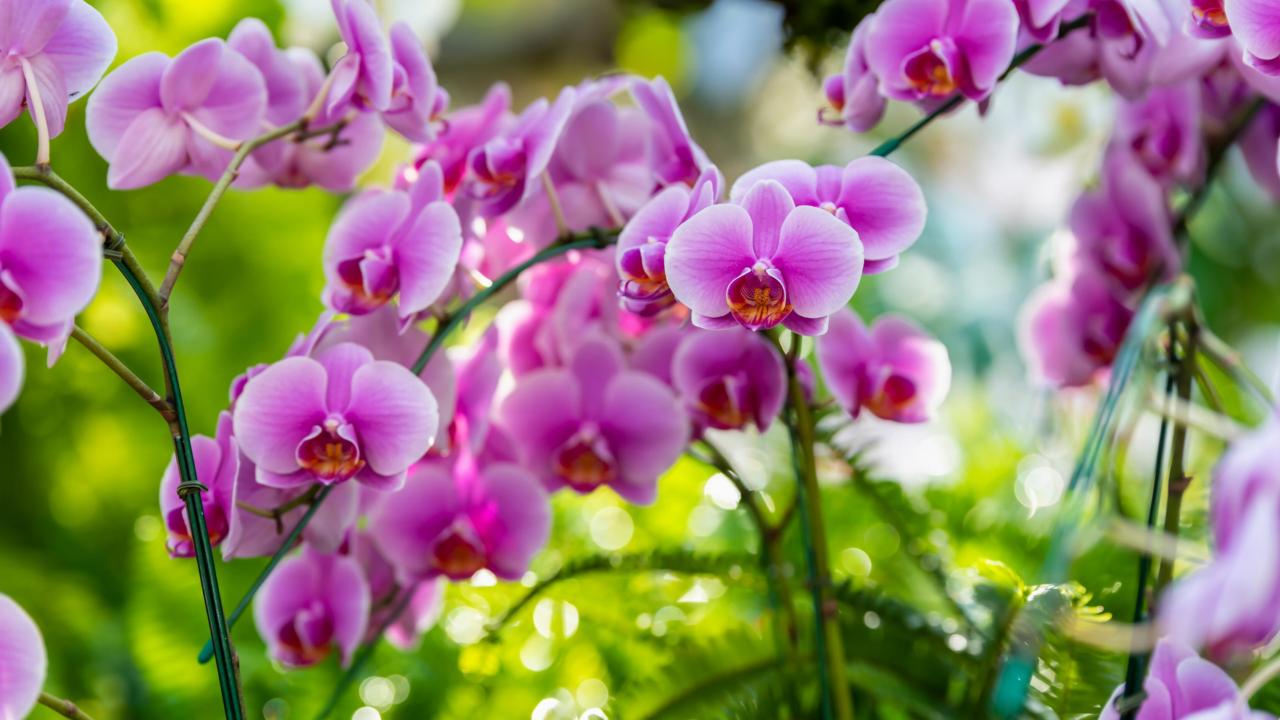
Loveof nature
'My research came out of a simple love for the beauty of the orchid. I wanted to understand the flower more,' says Dewi. According to her, caring for nature often begins with a fascination with its beauty. 'When I started doing research, I really saw how beautiful and intricate the orchid really is, and I understood that if we want to continue to enjoy the flowers, we have to take good care of this plant. If everyone felt a little more love for nature, it would be easier to get involved. So, like me, look for the beauty of nature around you.
